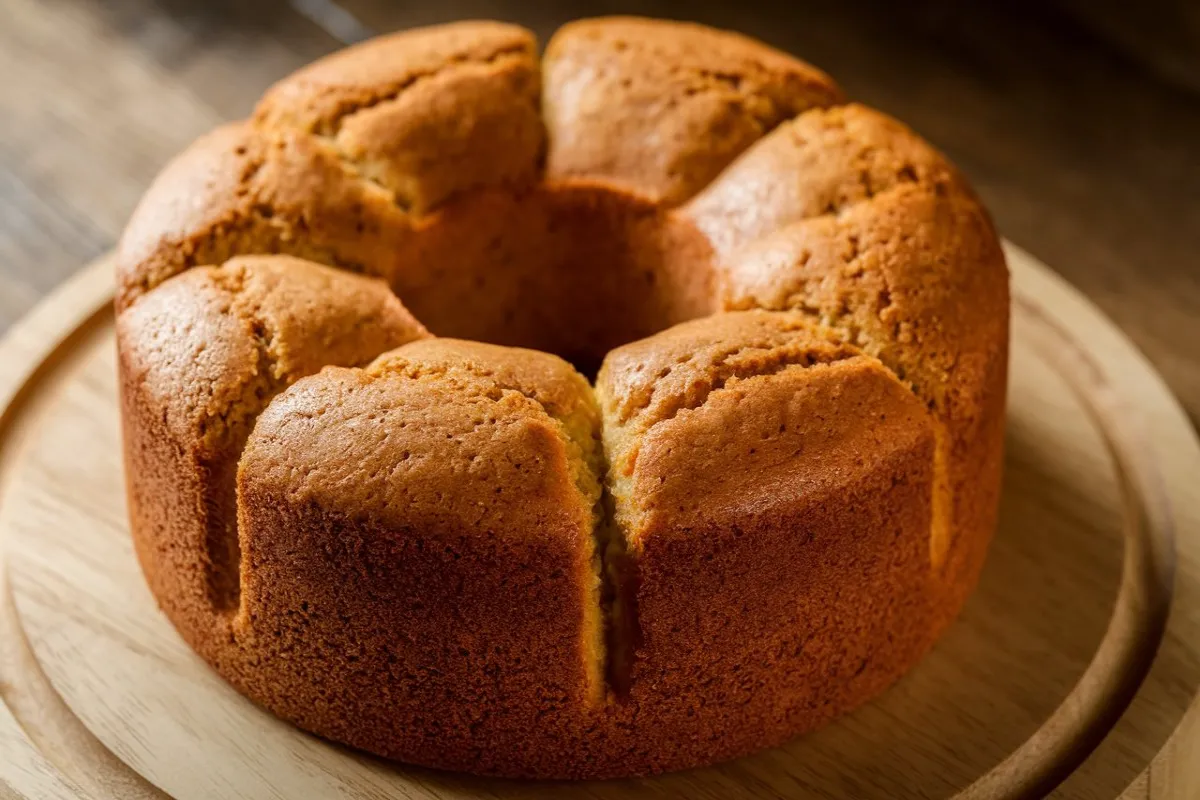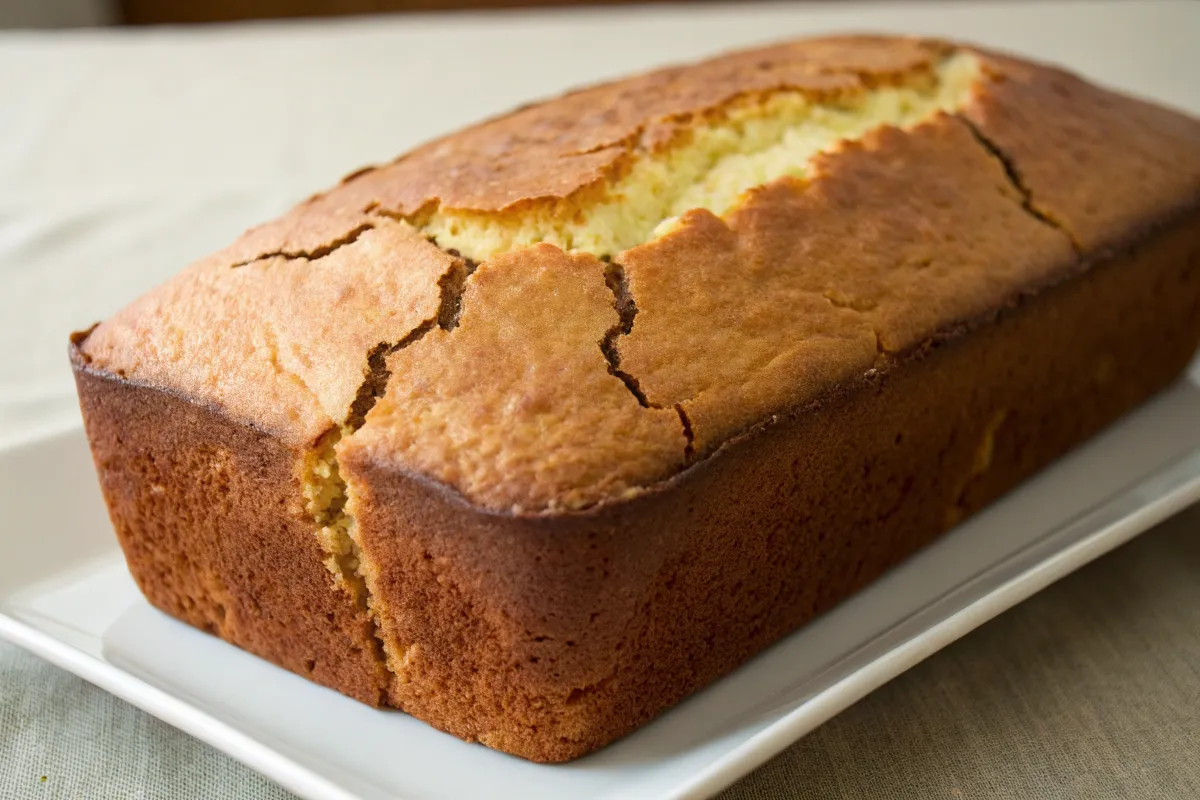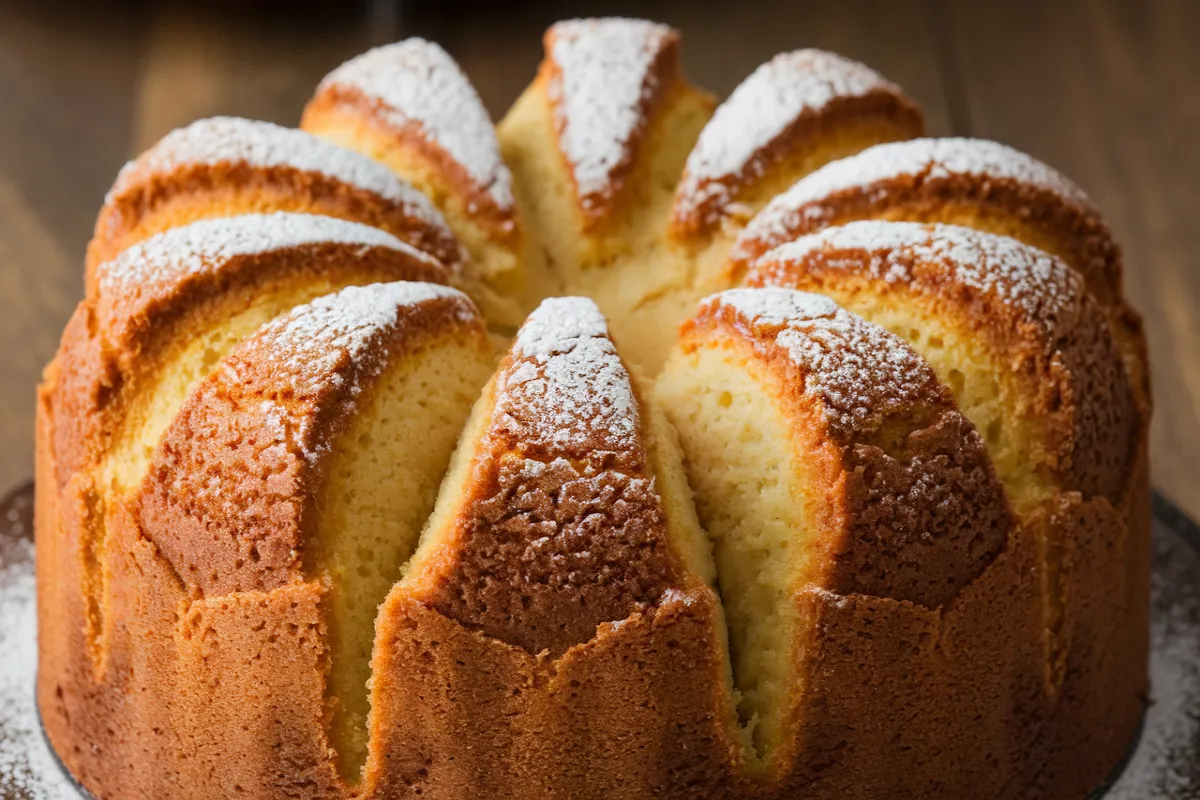This article explores the techniques for achieving a beautifully cracked top on pound cake. Discover the science and methods to bake that classic bakery-style look at home.
Understanding Pound Cake Cracks
Pound cake, a dense and buttery delight, often develops a signature crack on its surface. This isn’t a flaw but rather a sign of perfect baking. Many bakers specifically seek out this characteristic in their cakes. But how to make pound cake crack consistently is not always obvious. The crack indicates the cake’s interior is expanding, and the top crust is setting just right. Therefore, mastering this requires understanding heat, ingredients, and techniques.
The Science Behind a Cracked Top
The development of a crack in pound cake is due to several factors working together. First, heat causes the batter to rise quickly. Consequently, the top crust sets faster than the interior. Then, as the center continues to expand, it pushes against this set crust. Therefore, this pressure results in the surface splitting, creating the desired crack. Understanding this process is essential to achieving the perfect crack.
Key Ingredients for a Perfect Crack
Several key ingredients contribute to a beautifully cracked pound cake. First, the type of fat plays a crucial role. Butter, for example, creates a denser cake that cracks more easily than oil. In addition, the amount of sugar influences the cake’s rise. Therefore, using the correct proportions of ingredients is especially important. Additionally, leavening agents, such as baking powder, also contribute to the cake’s expansion. Furthermore, using the right ratio of each will ensure success.
Preparing Your Batter for Success
A well-prepared batter is essential for a good crack. Therefore, proper mixing techniques are key. Moreover, the quality of the ingredients also contributes significantly.
Room Temperature Ingredients
Using room temperature ingredients is absolutely crucial for a smooth batter. Butter, eggs, and dairy products combine more easily when they are warm. This creates a more uniform emulsion, leading to better baking. Conversely, cold ingredients can cause the batter to separate. Thus, always take your ingredients out in advance. Furthermore, allowing ingredients to reach room temperature is generally a good practice in baking. This small step is crucial for achieving the perfect texture.
Proper Mixing Techniques
Overmixing the batter can lead to a tough cake. Therefore, always mix ingredients until just combined. Use a low speed for mixing to prevent excessive gluten development. This results in a more tender cake, which can crack beautifully. Conversely, undermixing can result in uneven texture and a cake that won’t crack as desired. Consequently, it’s important to strike the right balance when mixing. Likewise, using a folding technique rather than high speed can also help.
Using Enough Leavening Agents
The right amount of leavening agent is vital for the cake to rise and crack. Baking powder helps the cake to expand. Therefore, measure leavening agents carefully. Too little will not provide enough lift and consequently hinder the crack. Too much can result in an uneven cake. Therefore, it’s essential to follow the recipe precisely. Moreover, make sure your leavening agents are fresh.
Baking for a Perfect Crack
The baking process is equally as important as batter preparation. Here, we delve into critical steps. Furthermore, each stage requires specific attention to achieve the perfect result.
Oven Temperature and Placement
Oven temperature directly affects the crack. Preheat your oven correctly to the specified temperature. Additionally, oven placement is crucial. Position your cake in the center of the oven for even heat distribution. Uneven heating can lead to inconsistent results. Therefore, a well-preheated, correctly used oven is key. Undoubtedly, accurate oven temperature is fundamental for consistent results. Likewise, using an oven thermometer can be helpful.
Initial High Heat to Set Crust
Starting with an initial higher heat helps to set the top crust. This firm crust creates resistance as the center expands. Therefore, this higher temperature is vital to creating the perfect crack. Consequently, many recipes recommend a short burst of high heat initially. Afterwards, the heat is reduced to cook the rest. Especially, this step needs careful monitoring.
Lowering Temperature for Even Cooking
Once the crust is set, reduce the oven temperature. This allows the cake’s interior to bake fully. However, keep the heat high enough to ensure the rising. Therefore, balancing temperature is necessary to cook without burning the surface. This gradual heating ensures even cooking and a beautiful crack. Moreover, using a timer is also crucial during this phase.
How to Make Pound Cake Crack: Troubleshooting
Even with the best intentions, problems can arise. However, we can troubleshoot. These common issues can be corrected with a few simple adjustments.
Cake Not Cracking
If your cake isn’t cracking, consider a few possibilities. Perhaps the oven temperature was too low initially, failing to form the crust. Additionally, the leavening agent may not have been used in sufficient amounts. Conversely, the batter may have been overmixed. Therefore, check every step. Consequently, reviewing all the techniques is important for success. Furthermore, ensure your leavening agents are fresh and active.
Uneven Cracking
Uneven cracking may mean the heat is not distributed well. Oven placement plays a role. It may also mean the batter was not mixed well. This leads to uneven distribution of ingredients. As a result, some areas crack more than others. Therefore, improving your mixing technique and oven conditions should help. Specifically, a convection oven may help with even heat distribution.
Cake Cracks Too Much
If the cake is cracking excessively, the oven might be too hot. Too much heat will cause too much rise. Additionally, using too much baking powder can also cause extreme cracking. Therefore, it is important to balance oven temperature and leavening agents. Adjusting these can help control how to make pound cake crack. Additionally, paying close attention to each step is vital. Also, consider a slightly lower oven temperature to help with this issue.
Alternative Methods to Encourage Cracking
Some bakers use alternative methods to achieve the perfect crack. These methods can provide reliable results.
Creating a Steam Bath
Baking the pound cake in a water bath can help to create steam. Therefore, this moisture helps the cake to rise gently and evenly. The steam slows down the top crust setting, allowing the expansion to build. As a result, a lovely crack may form. Accordingly, this method can be very effective. Additionally, this also creates a very moist cake.
Scoring the Top
Some bakers score the top of the cake batter before baking. This creates a weak point on the surface. Thus, the crack is more likely to form along the score line. Therefore, this can help control the appearance of the crack. This technique also helps with aesthetics. Furthermore, this is a simple way to achieve a more controlled crack.
Adding a Thin Sugar Layer
Adding a very thin layer of sugar on top of the batter before baking is another technique. This added sugar creates a slightly caramelized crust. Consequently, it may aid in the crack formation. Similarly, this thin sugar layer also adds flavor and texture to the cake’s top. Moreover, this caramelized top gives extra sweetness.
Flavor Variations for Pound Cake
Beyond the classic recipe, you can explore several flavor options for your pound cake.
Citrus Zest and Juices
Adding citrus zest and juice can give your pound cake a refreshing twist. Lemon, orange, and lime zest each add unique flavors. Therefore, experimenting with different citrus combinations can be fun. Additionally, a little bit of citrus juice can add extra moisture.
Vanilla and Other Extracts
Vanilla extract is a staple in pound cake, but other extracts can be great too. Almond, lemon, and even a hint of rum extract can elevate the flavor profile. Consequently, using high-quality extracts is essential for the best results. Likewise, experimenting with flavor combinations is key to personalizing your pound cake.
Chocolate and Cocoa Powder
For chocolate lovers, adding cocoa powder or melted chocolate is perfect. This creates a rich and decadent chocolate pound cake. Specifically, using good quality cocoa will result in the best color and taste. Moreover, you can even add chocolate chips for more texture.
Adding Spices for Warmth
Adding spices like cinnamon, nutmeg, or cardamom can give your pound cake a warm, comforting feel. These spices work particularly well during the fall and winter. Therefore, experiment to find the balance that suits you best. Additionally, using freshly ground spices can enhance the flavor and aroma.
Tips for the Best Pound Cake Results
Beyond techniques, other factors can improve how to make pound cake crack and taste amazing. Small details can make all the difference.
Using Quality Ingredients
High-quality ingredients enhance flavor and texture. Therefore, use fresh butter and eggs. Similarly, good vanilla extract also elevates the flavor. Additionally, the quality of these key ingredients will directly impact the final product. Fresh ingredients can also affect the cake’s rise and texture which impacts the crack. Moreover, using unsalted butter gives you better control over the flavor.
Allowing Cake to Cool Properly
Allow the pound cake to cool in the pan for 10 to 15 minutes before removing it to a rack. This allows the cake to set properly and prevent breakage. Rushing the cooling process can cause the cake to fall apart. Therefore, patience is essential during this step. Besides, a wire rack will allow for even cooling.
Storing Your Pound Cake Correctly
To maintain the freshness and texture of your pound cake, store it properly. Wrap it tightly in plastic wrap or keep it in an airtight container. Consequently, this helps to prevent it from drying out. Correct storage will ensure your cake tastes just as good on the second day as it did on the first. Also, storing in a cool and dry place will help.
Serving Suggestions for Pound Cake
Pound cake is quite versatile and can be served in numerous ways. Explore some pairing and serving suggestions.
With Fresh Fruit and Whipped Cream
Pound cake is delicious served with fresh berries, sliced peaches, or other fruits. Add a dollop of whipped cream for an extra layer of flavor. Therefore, this is a simple but elegant way to serve pound cake. Moreover, the freshness of the fruit compliments the cake.
With a Glaze or Sauce
A simple glaze or sauce can elevate your pound cake. A lemon glaze, chocolate sauce, or caramel drizzle all pair well. Consequently, the added moisture enhances the texture of the cake. Furthermore, these additions add both flavor and visual appeal.
Toasted or Grilled
Try toasting or grilling a slice of pound cake for a unique texture and flavor. The heat caramelizes the edges and makes it extra delicious. Additionally, this is a very simple way to enjoy your pound cake.
Conclusion
Mastering how to make pound cake crack involves understanding the science, ingredients, and techniques involved in baking. From using room temperature ingredients to baking at the right temperature, every step plays a vital role in achieving that signature crack. By carefully following these guidelines and practicing, you can consistently create pound cakes with a beautifully cracked top. This characteristic crack is a sign of success in pound cake baking. Therefore, take all these techniques into account to ensure your pound cake is the best it can be. Ultimately, patience and practice are key to perfection.
Frequently Asked Questions (FAQs):
How to get crack on pound cake?
To achieve a crack on a pound cake, start with room temperature ingredients. Use the correct amount of leavening, and bake at a higher initial temperature to set the top crust. Then, lower the heat to bake evenly.
What causes pound cake to crack on top?
The crack on top of pound cake results from the center expanding faster than the top. The initial heat sets the top crust, and the interior’s continued rise causes the crust to split. It is therefore crucial to use the correct oven temperatures.
What makes a cake crack?
A cake cracks when its interior expands faster than the surface. This is due to heat and leavening. Therefore, the top crust sets and resists the rising center, causing the crack.
What causes a pound cake to crumble?
A pound cake can crumble if it’s overbaked or if it doesn’t cool properly. Too little moisture can also cause a cake to crumble. Make sure the cake cools completely in the pan before removing it.



